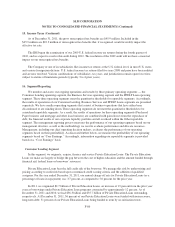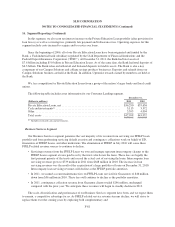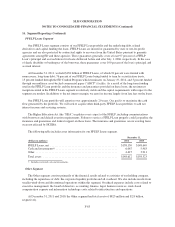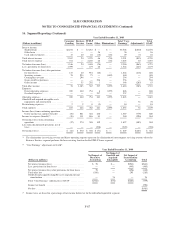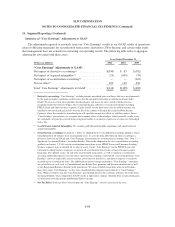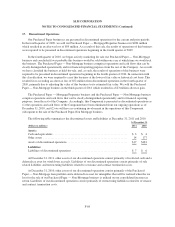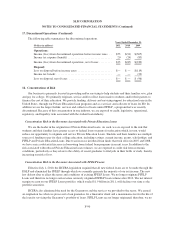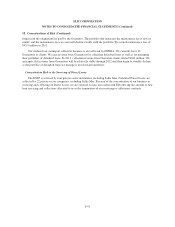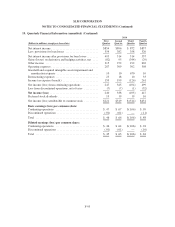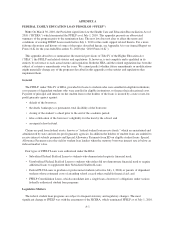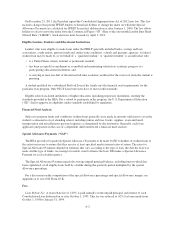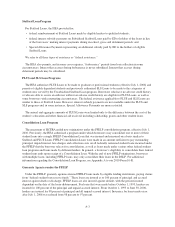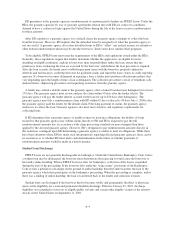Sallie Mae 2011 Annual Report Download - page 197
Download and view the complete annual report
Please find page 197 of the 2011 Sallie Mae annual report below. You can navigate through the pages in the report by either clicking on the pages listed below, or by using the keyword search tool below to find specific information within the annual report.
SLM CORPORATION
NOTES TO CONSOLIDATED FINANCIAL STATEMENTS (Continued)
16. Segment Reporting (Continued)
Summary of “Core Earnings” Adjustments to GAAP
The adjustments required to reconcile from our “Core Earnings” results to our GAAP results of operations
relate to differing treatments for securitization transactions, derivatives, Floor Income, and certain other items
that management does not consider in evaluating our operating results. The following table reflects aggregate
adjustments associated with these areas.
Years Ended December 31,
(Dollars in millions) 2011 2010 2009
“Core Earnings” adjustments to GAAP:
Net impact of derivative accounting(1) ................ $(540) $ 83 $(502)
Net impact of acquired intangibles(2) ................. (24) (699) (76)
Net impact of securitization accounting(3) ............. — — (201)
Net tax effect(4) .................................. 220 118 296
Total “Core Earnings” adjustments to GAAP .......... $(344) $(498) $(483)
(1) Derivative accounting: “Core Earnings” exclude periodic unrealized gains and losses that are caused primarily
by the mark-to-market valuations on derivatives that do not qualify for hedge accounting treatment under
GAAP. To a lesser extent, these periodic unrealized gains and losses are also a result of ineffectiveness
recognized related to effective hedges. These unrealized gains and losses occur in our Consumer Lending,
FFELP Loans and Other business segments. Under GAAP, for our derivatives that are held to maturity, the
cumulative net unrealized gain or loss over the life of the contract will equal $0 except for Floor Income
Contracts where the cumulative unrealized gain will equal the amount for which we sold the contract. In our
“Core Earnings” presentation, we recognize the economic effect of these hedges, which generally results in any
net settlement cash paid or received being recognized ratably as an interest expense or revenue over the hedged
item’s life.
(2) Goodwill and Acquired Intangibles: We exclude goodwill and intangible impairment and amortization of
acquired intangibles.
(3) Securitization accounting: On January 1, 2010, we adopted the new consolidation accounting guidance which
Consolidated our off-balance sheet securitization trusts. As a result, from 2010 forward, there is no longer a
difference between our GAAP and “Core Earnings” presentation for securitization accounting. (See “Note 2 —
Significant Accounting Policies” for further details). Prior to the adoption of the new consolidation accounting
guidance on January 1, 2010, certain securitization transactions in our FFELP Loans and Consumer Lending
business segments were accounted for as sales of assets. Under “Core Earnings” for the FFELP Loans and
Consumer Lending business segments, we present all securitization transactions as long-term non-recourse
financings. The upfront “gains” on sale from securitization transactions, as well as ongoing “securitization
servicing and Residual Interest revenue (loss)” presented in accordance with GAAP, were excluded from “Core
Earnings” and were replaced by interest income, provisions for loan losses, and interest expense as earned or
incurred on the securitization loans. The additional net interest margin included in “Core Earnings” contained
any related fees or costs such as Consolidation Loan Rebate Fees, premium and discount amortization as well
as any Repayment Borrower Benefit yield adjustments. We also excluded transactions with our off-balance
sheet trusts from “Core Earnings” as they were considered intercompany transactions on a “Core Earnings”
basis. While we believe that our “Core Earnings” presentation presents the economic substance of results from
our loan portfolios, when compared to GAAP results, it understates earnings volatility from securitization gains,
securitization servicing income and Residual Interest income.
(4) Net Tax Effect: Such tax effect is based upon our “Core Earnings” effective tax rate for the year.
F-88




